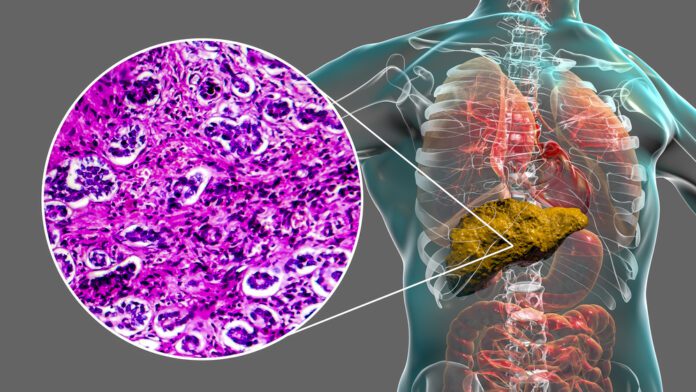Overview Of Primary Biliary Cirrhosis (PBC)
The bile ducts are tubes that move bile from the liver to the small intestine. Bile is a substance that helps with digestion. All of the bile ducts together are called the biliary tract. When the bile ducts become swollen or inflamed, this blocks the flow of bile. These changes can lead to scarring of the liver called cirrhosis. This is called primary biliary cirrhosis (PBC). Advanced cirrhosis can lead to liver failure.
Commonly Associated With
Primary biliary cholangitis
Causes Of Primary Biliary Cirrhosis (PBC)
The cause of inflamed bile ducts in the liver is not known. However, primary biliary cirrhosis is an autoimmune disorder. That means your body’s immune system mistakenly attacks healthy tissue.
The disease may be linked to autoimmune disorders such as:
- Celiac disease
- Raynaud phenomenon
- Sicca syndrome (dry eyes or mouth)
- Thyroid disease
- The disease most often affects middle-aged women.
Symptoms Of Primary Biliary Cirrhosis (PBC)
More than one-half of people have no symptoms at the time of diagnosis. Symptoms most often begin slowly.
Early symptoms may include:
- Nausea and belly pain
- Fatigue and loss of energy
- Fatty deposits under the skin
- Fatty stools
- Itching
- Poor appetite and weight loss
As liver function worsens, symptoms may include:
- Fluid buildup in the legs (edema) and in the abdomen (ascites)
- Yellow color in the skin, mucous membranes, or eyes (jaundice)
- Redness on the palms of the hands
- In men, impotence, shrinking of the testicles, and breast swelling
- Easy bruising and abnormal bleeding, most often from swollen veins in the digestive tract
- Confusion or problems thinking
- Pale or clay-colored stools
Exams & Tests
The health care provider will do a physical exam.
The following tests can check to see if your liver is working properly:
- Albumin blood test
- Liver function tests (serum alkaline phosphatase is most important)
- Prothrombin time (PT)
- Cholesterol and lipoprotein blood tests
Other tests that can help measure how severe liver disease may include:
- Elevated immunoglobulin M level in the blood
- Liver biopsy
- Anti-mitochondrial antibodies (results are positive in about 95% of cases)
- Special types of ultrasound or MRI that measure the amount of scar tissue (maybe called elastography)
- Magnetic resonance cholangiopancreatography (MRCP)
Treatment Of Primary Biliary Cirrhosis (PBC)
The goal of treatment is to ease symptoms and prevent complications.
Cholestyramine (or colestipol) may reduce the itching. Ursodeoxycholic acid may improve the removal of bile from the bloodstream. This may improve survival in some people. A newer drug called obeticholic acid (Ocaliva) is also available.
Vitamin replacement therapy restores vitamins A, K, E, and D, which are lost in fatty stools. A calcium supplement or other bone medicines may be added to prevent or treat weak or soft bones.
Long-term monitoring and treatment of liver failure are needed.
A liver transplant may be successful if it is done before liver failure occurs.



